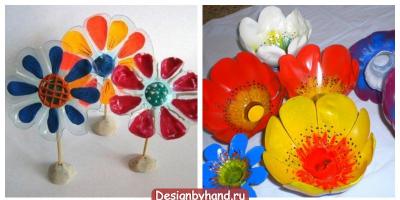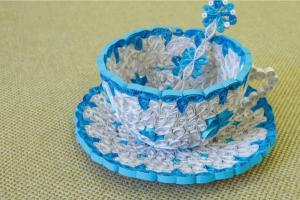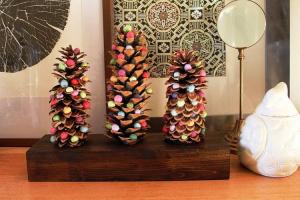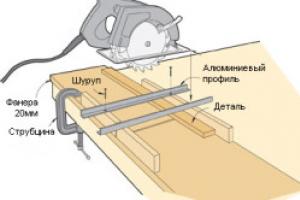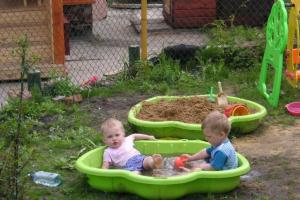Besides the pleasant appearance, this plant has a honey aroma, and thanks to its unpretentiousness, its flowers delight others until frost.
Botanical description
Lobularia maritima, or otherwise called marine alyssum, is one of the species of the genus Lobularia and belongs to the Brassica family.
You can also hear popular names: alyssum, lawnwort, mason - these are all the same plant, it has no shortage of popularity. The origin is Mediterranean, but the species is widely naturalized in areas with cooler climates.
The best place for lobularia is a well-lit, warm area. Accordingly, damp and cool places for planting it should be avoided. In partial shade the plant does well, but the number of inflorescences decreases.
Important! The possibility of cross-pollination of lobularia must always be taken into account, so its different varieties are planted separately, at a distance of at least 200 meters from each other, to avoid mixing.

Soil selection
Growing from seeds
The process of growing lobularia from seeds is simple. Possible as planting seeds in open ground, and preliminary germination at home. The seeds themselves do not need special care during storage. It is important to know when to sow seeds or plant seedlings.
Direct sowing
After lobularia blooms, fruits are formed - these are oval-shaped pods with sharp tips. The seeds are very small and of different colors, depending on the variety. Purple lobularia have seeds ranging from orange to brown. White ones have yellow seeds.
Seeds should be collected only after the pods turn yellow. Collected seeds do not lose their properties until three years and all this time they are excellent planting material.
It is recommended to plant lobularia in the spring when the air temperature is stable (late April - May) or late autumn, but before the first snow (mid-October). Seeds should be sown in open, dug soil, onto which calcium flour for the plant can be first sprinkled. They are sown evenly over the entire sown area, after which they are gently compacted by hand.
You should not sprinkle the crop with additional soil, as this will cover it from sunlight and will significantly slow down the process of seed germination. You need to water the area evenly and carefully, without flooding the crops.
After waiting for the first shoots, you should give the lobularia another two weeks to grow, and then thin out. The distance between shoots should be approximately 15 cm - this stimulates the flower to grow and also has a preventive effect against possible diseases.
Under favorable conditions, lobularia is able to reproduce by self-sowing. But even in this case, plants have to be replanted every 2-3 years.
Seedling method
This method allows you to significantly speed up the flowering of the plant. To do this, planting material is sown in small boxes filled with drainage and loose soil.
After sowing, the seeds should be pressed firmly with the palm of your hand, but should not be pressed too deeply. Next, the sowing must be covered with film or glass. Comfortable temperature regime for the plant 16-20 °C.  Sprouts appear in about 7-10 days. After the shoots sprout, protective film should be removed. For normal growth, lobularia sprouts need to create additional lighting. In May, it is recommended to take out the sprouted sprouts open air- this contributes to the hardening of seedlings.
Sprouts appear in about 7-10 days. After the shoots sprout, protective film should be removed. For normal growth, lobularia sprouts need to create additional lighting. In May, it is recommended to take out the sprouted sprouts open air- this contributes to the hardening of seedlings.
When three leaves appear on the stem of the plant, you should begin picking and transplanting the seedlings. Individual specimens can be transplanted into pots or other areas.
Lobularia is planted in open ground at the end of spring. About two weeks before planting the seedlings, it is recommended to fertilize the soil with fertilizers. It is advisable to add sand and gravel to heavy clay soil.
The size of the holes should be slightly larger than the size of the rhizome so that the plant feels comfortable in the new place. After planting, flowers should be planted abundantly.

Do I need to care for lobularia?
Lobularia is a very unpretentious plant and does not require special conditions, but gardeners need to know about some of the nuances of growing this species.
For normal growth, the plant is planted on sufficiently moist nutrient soils. But it should be remembered that an excess of humus will lead to a loss of flowering, as the plant will increase its green mass.
Did you know? The word "alissum" is believed to have come from the Latin "a lyssa", meaning "devoid of canine rabies". There is a version that this name is associated with the use of this plant as a remedy in the distant past. Currently, alyssum is not used as a medicine.
Lobularia is a frost-resistant plant and does not require winter shelter, and also easily withstands seasonal drops in air temperature. When flowering stops, the lobularia bushes are trimmed, thus causing a second wave of flowering. In this case, the stems of the plant are cut to 8 cm, no more.
The plant does not need additional
Lobularia is a genus of flowering plants from the Cruciferous family, closely related to the popular garden flower from the genus Alyssum (they are also often called sweet alyssum). You can meet its representatives in Macaronesia and the Mediterranean region. Lobularia canariensis is found in the Canary Islands and Cape Verde, while Lobularia maritima grows on the island of Malta and Gozo in the Mediterranean Sea.
The lobularia flower has a name that comes from Greek word“small pod” - refers to the fruit of the lobularia.
Landscapers use the lobularia flower to decorate and design flower beds, rock gardens and living borders. This article offers a description of the lobularia flower and talks about its cultivation from seeds on a personal plot. You can see photos of different varieties of lobularia:


The genus Lobularia includes both annual and perennial plants. They grow to about 40 centimeters long (though they are generally much shorter) and 15 centimeters wide. The plant grows very low to the ground, has hairy, slightly oblong and oval leaves of a gray-green hue and cross-shaped clusters of fragrant snow-white flowers. The leaves are arranged in an alternating pattern mainly on the lower part of the stem. When flowers appear on the trunk, it becomes rigid and branched at several points.
The flowers consist of four round petals; many gardeners are sure that their aroma is comparable to the smell of fresh and aromatic honey. No wonder the flower attracts a large number of flies to yourself - the aroma of the color is truly outstanding.
This genus is susceptible to fungal plants and other pests. Below are a few more photos of lobularia in landscape design personal plot:


Proper planting and subsequent care of lobularia
Despite the fact that the plant is quite picky, it should be grown in a sunny place. But it is resistant to frost, and dies only during the most severe frosts or when water stagnates in large quantities in the root system (most often this happens in autumn and spring period). Based on this feature, we advise you to maintain a sense of proportion when watering - since in hot weather, lobularia needs regular watering, but stagnation of moisture will lead to rotting of the roots. The best way out is to avoid watering during the rainy periods of spring and autumn. The success of the plant’s growth and development in the future largely depends on this. Correct fit lobularia on a personal plot greatly simplifies the subsequent care of the plant and creates favorable conditions for its development.
During the growing season, gardeners strongly recommend using only organic fertilizers. And during watering, mineral fertilizers are added to the soil along with this procedure. Periodic loosening of the soil and mulching it after watering are the main activities that are included in the care of lobularia. 


Growing lobularia seedlings from seeds
We have already told you in what conditions a flower should grow - in the same conditions it is necessary to plant it. You can sow seeds in November - in this case you will have to additionally insulate the soil so that the seeds do not freeze there. As a result, the first shoots will appear in the month of May (but there is a high risk of fungal diseases). There are also gardeners who sow seeds in open ground only in April. Growing lobularia seedlings from seeds does not cause any trouble even for a novice gardener. 


If you are planning to start getting seedlings from seeds, then you should do this already in March. The seeds are sown in a container and then either covered with polyethylene or placed in a greenhouse - so that the first shoots appear on time, do not forget to maintain the temperature within 12-15 degrees Celsius. When the seedlings have grown sufficiently, you can begin to thin out the bushes, keeping a distance of at least 10 centimeters. Lobularia is planted in open ground only in May, when the root system has already formed - it is planted together with the root and a lump of earth at a distance of 15-20 centimeters from each other.
The first inflorescences appear on it earlier than one and a half to two months later. Laying out fertilizer will contribute to more active and healthy growth of the lobularia plant (optimally - 4-5 kilograms per 1 meter square).
after the end of flowering, the inflorescences are cut off, after which the inflorescences begin to bloom again for another one and a half to two months. 

Lobularia varieties for garden landscape design (with photos)
The variety of shades of the petals allows this plant to be widely used in the landscape design of any garden or personal plot. Next, we consider the most common varieties of lobularia, which are distinguished by their unpretentiousness to growing conditions, they are accompanied by photos illustrating their visual attractiveness. For landscape design Garden variety can be selected from the attached photo: 

Lobularia marine prefers partial shade
Lobularia marine is one of the most common varieties of this variety. It also requires well-drained soil, which should also be moderately fertile. Typically the plant is grown in loamy or sandy soil, but acidic or spruce soil will provide sufficient support for further growth. The sea variety feels best in places protected from wind and direct sunlight.
This annual (rarely and briefly perennial) plant grows up to 30 centimeters in height and about the same in width. The stem is characterized by abundant branching with dense clusters of snow-white flowers. The leaves are 4 millimeters long and up to 5 millimeters wide.
The flowers reach five millimeters in diameter, are fragrant with 4 rounded petals - the shade can be pink, purple, rose-red and lilac. Flowers grow throughout the growing season or all year round, in areas where there are no severe frosts and no frost. Pollinated by insects.
The fruit is an elongated pod (rather hairy) oval or round in shape. Each contains two seeds. Seeds are spread only by wind.
In gardens, varieties with pink and purple petals are most often found - the seeds are planted in early spring. In the design of a personal plot, it is most often used as a ground cover, since it rarely grows above 20 centimeters. Lobularia is also used to decorate cracks in walls and pavements.
The plant prefers partial shade, and the species with darker flowers is best placed and stored in a cool place. 

Lobularia "Royal Carpet" - honey smell from July to October
A member of the cruciferous family. The height of the flower can reach 12 centimeters - they are very low and bloom quite densely. Flowers of Lobularia "Royal Carpet" up to three millimeters in diameter form racemose inflorescences. The smell of honey will cover your garden along with the appearance of the first petals of lilac, pink, violet and white shade. Flowering time is from early July to late October. This is very convenient when you have large color compositions in the garden space. It does not like prolonged drought, but large amounts of moisture also harm it. 

Once in a flowerbed, lobularia remains there for a long time. And not only because unpretentious plant reproduces well by self-sowing. Inconspicuous at first glance, the flower captivates with its modest but exquisite beauty, wonderful aroma, vitality, abundant flowering until frost.
Being a representative of the group of ground cover plants, lobularia looks especially impressive in the company of bright, beautifully flowering partners in the flower garden, and in borders and mixborders it looks simply amazing.
Lawn grass, alyssum, alyssum - all this is about lobularia
Lobularia or alissum: common features and differences
Lobularia and alyssum are closely related; many believe that they are the same plant. Seed producers add to the confusion by often equating them. After all, both belong to the Brassicaceae (Cruciferous) family, have a common homeland - the Mediterranean, and are very similar in appearance. herbaceous plant, semi-lignified by the end of the growing season, forms a highly branched bush 10–40 cm high, abundantly covered with small flowers collected in lush racemose inflorescences. Narrow, sharp leaves of gray-green color are practically invisible from under the flower carpet.
Alyssum is a perennial, and marine lobularia is its annual variety. Initially, species with white and light purple inflorescences were grown in decorative floriculture. Through the efforts of breeders, varieties with flowers of pink, crimson, lilac, and purple shades have been created.
The crop is light-loving, prefers loose soils that are not too fertilized - otherwise the plant will become “fatten” and bloom worse. Moisture-loving, with a lack of watering it stops flowering, but after pruning and moistening it quickly resumes.
The special value of the lobularia flower is its ability to quickly grow into a lush carpet, forming compact spherical bushes. The plant is unpretentious in cultivation and care, blooms until frost, is responsive to shaping, and quickly resumes flowering after pruning.
This is interesting! Lobularia marine has healing properties, it is used as a laxative and mild diuretic. Dried bouquets of flowers – sustainable natural flavor air. A sachet pillow made of petals will relieve insomnia.
Use in garden design
Lobularia in white, purple, and mixed shades is loved by garden designers. Thanks to its neutral colors, it is indispensable as a border crop. It is used to border lawns, paths, and mixborders.
In discounts it is used as ground cover plant, acting as a backdrop for bright spots of beautifully flowering annuals and perennials. For the same purposes, it is planted in relief flower beds - rock gardens, rockeries.
Lobularia of a light purple hue resembles star pearls and goes well with other border crops of warmer, richer colors - marigolds, nasturtiums, low-growing zinnias.
An annual planted in a container forms a ball, densely showered with flowers and smelling of honey. Looks impressive in vertical gardening balconies, terraces, courtyards. 
In the photo, lobularia primortica
Popular varieties
The first to enter into culture and give birth to new varieties was marine or seaside lobularia. The low plant (12–15 cm) has a creeping rhizome and, as it grows, forms a cushion, densely covering the soil. Collected in a brush purple flowers exude a subtle sweetish aroma. It begins to bloom 1.5 months after germination, when grown through seedlings - already in May, and can withstand autumn frosts.
Royal carpet
Lobularia of this variety creates a truly royal carpet of flowers in all shades of white, lilac, crimson, and violet. A dwarf creeping plant, 8–12 cm tall, popular as a border and ground cover mixture. Suitable for winter sowing of seeds. Continuous flowering from June to October, refreshing appearance, instant replacement of faded inflorescences with new ones, combination with many garden plants– advantages of the variety.
The royal carpet is good in the garden
Snow carpet
No less charming are the thickets of lobularia of the Snow Carpet variety. The boiling whiteness of the fluffy inflorescences really resembles snow and creates a feeling of purity and airiness. Compact bushes 10–15 cm high grow up to 40 cm in diameter. The crop is sensitive to thickening - when planting, maintain an interval of at least 20 cm between plants. White, constantly blooming balls look original in mobile containers, flowerpots, and raised beds.
Snow-white blooming cloud
The very name of the variety contains an anticipation of something unusual. Lobularia Oriental Nights will not disappoint your expectations - juicy dark purple, purple flowers correct form, with a recognizable honey smell are impressive. Low bushes (up to 15 cm) branch strongly and grow rapidly after pruning. Refreshes alpine slide, decorates and shades any flower garden.
Pictured are Eastern Nights
Star Pearl
The second name of the variety is Purple Queen. Lobularia Star Pearl is reminiscent of Eastern nights. Miniature, highly branching bushes are distinguished by the density of flowering and the intensity of the growth of new shoots and peduncles. Quickly fills the free space of the flowerbed, creating volume. An unpretentious, cold-resistant crop can be grown through seedlings and winter sowing. The variety is prone to abundant self-sowing.
Growing at home
To get a thick carpet or a beautiful flower border, you need to plant more than a dozen plants. Considering the prices for ready seedlings, it is more profitable to grow lobularia from seeds at home. The unpretentious annual plant tolerates winter sowing well; it can be sown in spring with seeds in open ground, or you can try to grow seedlings.
Growing seedlings
Experienced gardeners prefer the seedling method, although this is more troublesome. What are the advantages?
- Early flowering - not at the end of June, but already in May.
- Freezing from spring frosts is excluded.
- The flower garden is planted evenly, there are no bald spots if the seeds have not sprouted.
The sowing technology is no different from other annuals.
Sowing seeds
Lobularia seeds are small and remain viable for 3 years. IN room conditions They germinate, depending on the variety, in 10–15 days.
Lobularia seeds
Prepare a container with soil in advance. The container must have drainage holes. Plastic containers with a lid are suitable - this is a ready-made mini-greenhouse with a good volume of air. The soil needs to be light and breathable. It’s good when the composition contains high-moor peat and river sand - they have loosening properties.
Before sowing lobularia for seedlings, moisten the soil and, if necessary, disinfect it by spilling a solution of manganese or antifungal drugs. Grooves are drawn on the surface, essentially marking the direction of the rows. The flower seeds are very small and are sown on the surface of the soil. The maximum you can sprinkle with a layer of coarse sand is no more than 0.5 mm. After sowing, the seeds are lightly pressed with a wooden block and the surface of the soil is sprayed with a spray bottle.
Advice! Sowing small-seeded annuals in the snow is effective. It is laid in a layer on top of the prepared soil, and the seeds are evenly distributed. Gradually melting, the snow will draw the seeds to the required depth. Short-term cooling stimulates the awakening of the embryo and faster germination.
The container with the sown seeds is covered with a transparent lid or placed in plastic bag. They remain in this form until germination, which will appear in approximately 2 weeks. The greenhouse must be ventilated daily and, if necessary, moistened. But you need to be careful with water - although alyssum is marine, it does not tolerate soaking.
Sowing time
The answer to the question of when to plant lobularia seedlings depends on how early spring comes in your region. Optimal timing For middle zone- first half of March. By this time, daylight hours increase and the seedlings turn out strong, do not stretch, and take root better.
Seedling care, planting
Small seeds produce thin, fragile seedlings. If a lot has sprouted, they are thinned out, leaving 2-3 pieces at a distance of 10 cm. The second option is diving into cups or pots. It is also recommended to take several plants at a time, in case something doesn’t take root.
To prevent lobularia from freezing, seedlings are planted after May 10. Flowers are planted in a sunny area in groups, maintaining an interval of 20 cm.
Tender, weak shoots will grow into strong, highly branching bushes
Direct sowing into the ground
Lobularia can be grown from seeds by spring sowing in open ground from approximately mid-April. The area is well loosened, leveled, and complex mineral fertilizers are applied before sowing. Sow on the surface of the soil. The technology is the same as when growing seedlings.
Advice! The annual plant reproduces by self-sowing, maintaining its varietal characteristics. Seedlings sprout early and develop quickly, catching up and overtaking the seedlings. The seedlings are thinned out, some of them can be planted for further cultivation.
Rules of care
The lobularia flower is unpretentious and does not need special care, but if you follow certain rules, it will be grateful and respond with luxurious flowering.
- Grows best in sun or light partial shade.
- It loves space, stretches out in dense plantings, is poorly ventilated, which leads to rotting of the roots.
- Sensitive to drought and overwatering. In the first case, it stops flowering, in the second, it begins to get wet and rot.
- Regular pruning of faded flower stalks stimulates the appearance of fresh ones. After cleaning, it is advisable to water and fertilize with complex fertilizers.
- One of the few garden crops that can be cut. To renew the flowers, cut off the ground part, leaving 5–6 cm, water it abundantly, and feed it. The second flowering will be no less magnificent and will last until frost.
An unpretentious plant gives more than is expected from it. With it, familiar flower beds will sparkle with new colors, and the garden will be filled with a honey fragrance.
Alyssum is loved for its beauty, grace and alluring aroma of flowers. It is jokingly called “a flower for lazy summer residents.” The secret of the plant’s popularity is its unpretentiousness and easy care.
Popular types and varieties
Alyssum rocky
A common horticultural species, native to Southern Europe. This is a highly branched perennial 15–25 cm high. The bluish pubescence gives the leaves a grayish tint. Forms round bushes 30–40 cm wide. Cultivated forms have double flowers different shades yellow color. Rock alyssum blooms in April-May for a month, and can bloom again in August.

A perennial species often found in Europe. In our country it grows in the steppes and dry forests of Central Russia. The bushes grow up to 10–20 cm. They have raised and creeping shoots. The leaves are pubescent gray-green, the flowers are yellow, collected in racemes.
Alyssum pyrenees
A perennial 15–20 cm high native to the Iberian Peninsula. It has fleshy silvery leaves covered with hairs and compact white inflorescences.
Alyssum creeping
Winter-hardy perennial from Asia, 40–60 cm high. Shoots are collected in bunches. Their leaves are narrow, gray-green in color. The flowers are bright yellow, collected in elongated inflorescences.

Alyssums often include marine lobularia, a plant with fragrant white or lilac flowers. In the wild, it is found in rock crevices and sand dunes of the Mediterranean. Most varieties of marine lobularia have shoots 8–10 cm long, but there are varieties that grow up to 40 cm. The shape of the bushes is erect or spreading. The leaves are narrow, lance-shaped. Small flowers collected in inflorescences-corymbs. During flowering, they completely cover the bushes. The aroma of the flowers is thick and strong, reminiscent of the smell of honey. This attracts insects - bees and butterflies.
In addition to traditional plants with white and lilac inflorescences, varieties with pink, yellow, crimson, and red flowers have been bred.
Among the variety series, the leader in popularity is “ Esther Bonnet" From the seeds grow compact bushes 6–8 cm high with dense inflorescences of white, pink, purple and lavender shades.
To the variety series " Golf» includes miniature plants up to 6 cm with flowers of bright colors and delicate pastel shades.
Of the varieties known “Tinu Tim”, “Snow City”, “Snow Carpet”» – lobularia with white flowers.
In plants of varieties " Rosie o Day" « Crystal purple" inflorescences Pink colour.
"Eastern Nights", "Purple Queen"» – lobularia with beautiful flowers dark purple color.
Growing from seeds
Alyssum is grown through seedlings or by sowing seeds in open ground.
For growing seedlings In the spring, boxes or pots and loose soil mixture are prepared. Use store-bought soil or add it to a homemade mixture of peat, garden soil, humus and sand. All components are taken in equal parts.
Before sowing, seeds are soaked for 5–6 hours in a solution of growth stimulants. Then they are dried a little and sowing begins. The ground in the box is leveled and grooves are marked. Alyssum seeds are small; they are placed in rows to a depth of no more than 2–3 mm. The distance between the seeds is 1-1.5 cm. The grooves are sprinkled with sand and sprayed with water from a spray bottle.
The boxes are covered with film or glass and placed in a warm place with an air temperature of 23-25°C. Shoots appear quickly, after 4-7 days the first shoots are visible. The cover is removed from the containers. If sowing was done early - in early March, then the seedlings are given additional light. If you sowed at the end of March - beginning of April, then additional lighting during this period is not required. After emergence of seedlings, the temperature is reduced to 18–20°C. It is best to transfer young plants to glass balcony. In a warm room, the seedlings will quickly begin to stretch. Seedlings are watered moderately, avoiding waterlogging.
When the grown seedlings have 2-3 true leaves, pick them. Tender plants are carefully removed from the soil and transplanted one at a time into a larger box. Instead of boxes, you can plant alyssum in separate pots or seedling cassettes with a diameter of 6–8 cm, 2 pieces in each cell.
In a common container, mark a row and place the seedlings in it at a distance of 3–3.5 cm from each other. Use a wooden ruler to move the soil, filling the row. The soil around the seedlings is compacted. After 4–5 cm, new rows are marked and the remaining plants are replanted.
Alyssum is sown in open ground when the earth warms up - at the end of April - beginning of May. The seeds are placed sparsely in grooves to a depth of no more than 3 mm. They are sprinkled with earth or compost on top and watered. If the weather is dry, the crops are covered with lutrasil. The shelter is removed after emergence, and after 2 weeks the seedlings are thinned out. A distance of 15–20 cm is left between them. Excess plants can be transplanted to another place.
To obtain constantly blooming alyssum of different shades, sowing is carried out several times at intervals of 2 weeks.
To get early shoots in spring, seeds can be sown in late autumn. Spring seedlings are strong, healthy and grow quickly. The soil for winter crops is prepared in advance before the ground freezes. Mark grooves on the beds - they should be deeper than when spring planting– 4–5 mm. Seeds are sown when a frozen “crust” forms on the soil. The rows are sprinkled with compost or peat.
Choosing a place and soil for planting

For alissum, choose open and sunny areas. You can plant them in the shade, but with this planting the flowering will be worse.
The soil should be dry, loose and permeable. With poor drainage, plants are more often affected by fungal diseases.
If the soils are heavy and clayey, then compost, humus, and sand are added to them. If necessary, lime the soil to reduce acidity. Its level should be neutral or alkaline, since in nature alyssum prefers calcareous sandy soils.
The plant is undemanding to fertility. Lobularia can grow even on poor soils. The main thing is that plants should not be grown in soil fertilized with fresh manure.
Planting in open ground
Hardened seedlings are planted in open ground from the second ten days of May. Alyssum is considered a cold-resistant plant, but if there is a threat of night frosts, it is recommended to protect the plantings with light covering material. The distance between the bushes is left 20 cm. As they grow, they will close together into a continuous clump and when the inflorescences bloom, it will look like a colored carpet.
Care
Watering
For alissum, excessive moisture is detrimental, but also long breaks in watering, overdrying of the soil negatively affects general condition and flowering of the plant. It is important to determine the optimal watering level. Young bushes are watered regularly as the top layer of soil dries. For an adult alyssum, if the weather is not dry and there is no rain, moisturizing once a week is sufficient. In extreme heat, water more often - 2-3 times a week.
Feeding
Perennial alyssums are fed 1–2 times per season, annual lobularia 2–3 times.
For the growth of young plants, nitrogen-containing fertilizers are used: urea, saltpeter, Agricola-7 (1 tablespoon of one of these products per 10 liters of water).
Before flowering and after pruning, plants are fed with complex mineral fertilizers for flowering plants.
Trimming
Alyssum (lobularia) begins to bloom 1.5 months after sowing the seeds. In cool summers, flowering lasts longer, and in hot summers, when the air temperature rises above 30°C, it blooms shorter.
Pruning alyssum stimulates the appearance of new flowering shoots. After the first wave of flowering, faded inflorescences are cut off, leaving parts 5–6 cm long. The plants are watered and fed. This will give impetus to new growth. Soon young shoots will appear from the axils, and after 10–14 days the alyssum will bloom again. The second flowering is more magnificent and longer. You can enjoy honey aromas until frost.
Reproduction
Alyssums are propagated seeds, cuttings. For perennial species all methods are suitable annual plants grown by seeds.
Seeds ripen by autumn. In September or early October, seed pods are collected from the bushes. If you leave faded plants in flower beds, they will take care of themselves - alyssums easily reproduce by self-sowing. Seeds retain maximum germination for 3 years.
For cuttings in June or August, apical shoots 10 cm long are cut off. Peduncles and lower leaves are removed, leaving a few upper leaves. The cuttings are immediately planted in a pot in a mixture of sand and peat. The roots appear within 1–2 weeks. Rooted cuttings are planted in open ground.
The earliest flowering of alyssum can be obtained if rooting is carried out in winter or in early spring. For this purpose in the fall mother plants They dig it up together with a lump of earth, cut off the above-ground part and plant it in pots. Plants overwinter in a cool room. They are rarely watered. Over the winter, new branches grow that can be cut and rooted. This process will be successful at an air temperature of 23–25°C. The container with cuttings is covered with a transparent bag or jar.
Pests, diseases
Of the diseases, alyssum is most often affected rot of roots and root collars, powdery mildew.
Reasons for the appearance rot is excess humidity. Alyssum seedlings may develop blackleg disease. If diseased plants are detected, they are destroyed and watering is reduced - the soil surface should dry out. The soil around the bushes is loosened to improve air exchange to the roots. Treating with fungicides and planting healthy plants in new soil will help stop the spread of the disease.
The first signs powdery mildew is the appearance of white spots on the leaves. They increase in size and become gray. The leaves begin to dry out and the flowers fall off. Most often, alyssums get sick in dense plantings. The plants are poorly ventilated and the soil around the bushes does not dry out. Diseased alyssums are removed, healthy plants are treated with preparations containing copper for prevention.
Plant pests are cruciferous flea beetle, cabbage moth, turnip moth.
Cruciferous flea beetle – voracious insect. In a week it can destroy all the buds and make holes in the leaves. It is better to use against cruciferous flea beetle preventive measures. It is effective to spray every 2 weeks with insecticides, for example, Iskra.
Pale green caterpillars cabbage moth They gnaw leaves, buds, flowers. They are collected by hand and destroyed with chemical and biological insecticides. The pest is repelled by infusions of wormwood, tobacco, vinegar, and citrus fruits.
Turnip white From May to August it lays eggs on leaves. The yellow-green caterpillars that appear live on them, gnawing holes. Light traps are set up against butterflies. Caterpillars are collected by hand, bacterial and chemicals, tobacco infusions.
Alyssum (lobularia) is always in the foreground in the flower dance. Its low, lush and fragrant clumps frame borders and lawns, decorate flowerpots, rockeries, etc.
Learn more about growing alyssum (lobularia) from the video.

